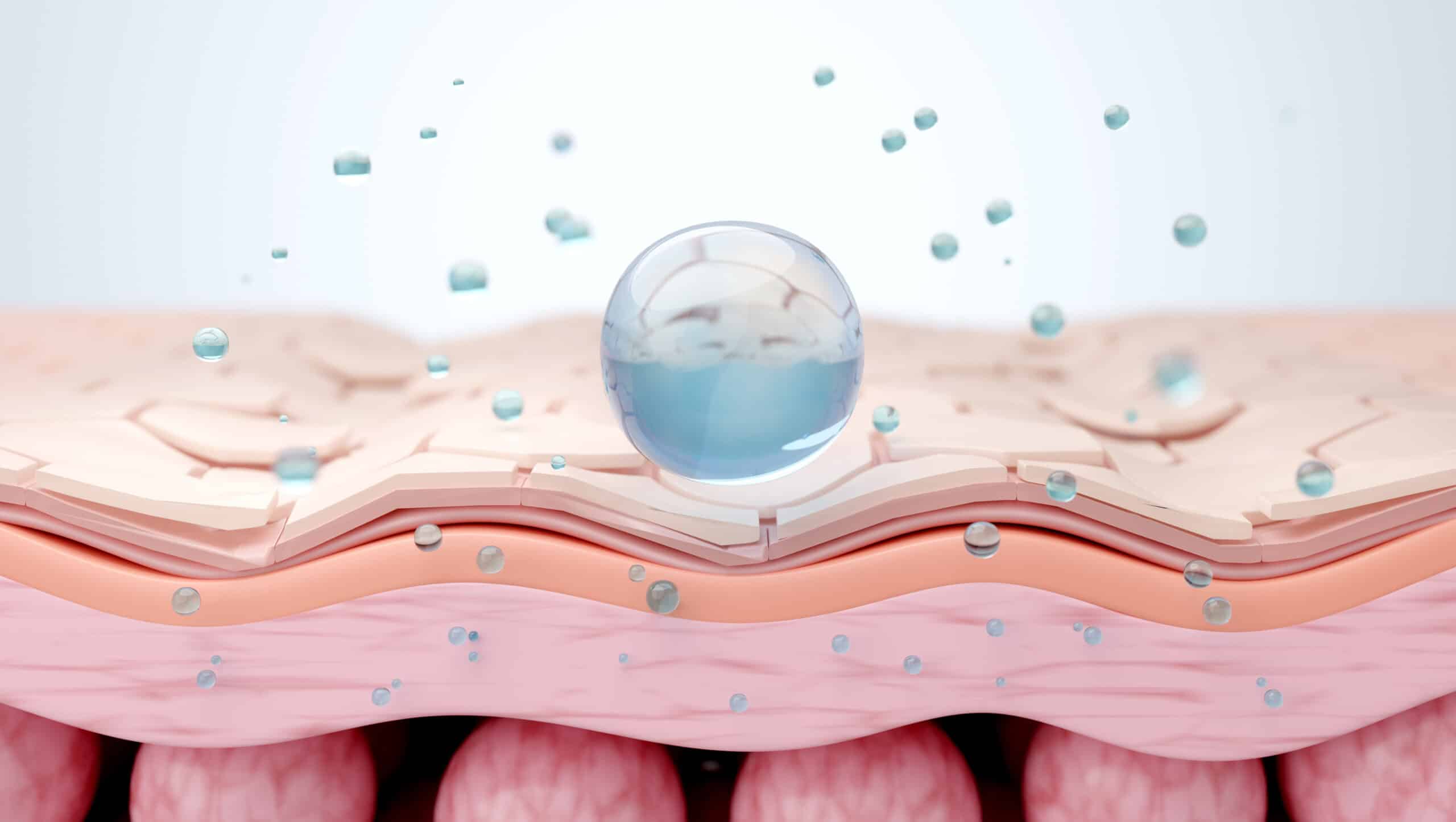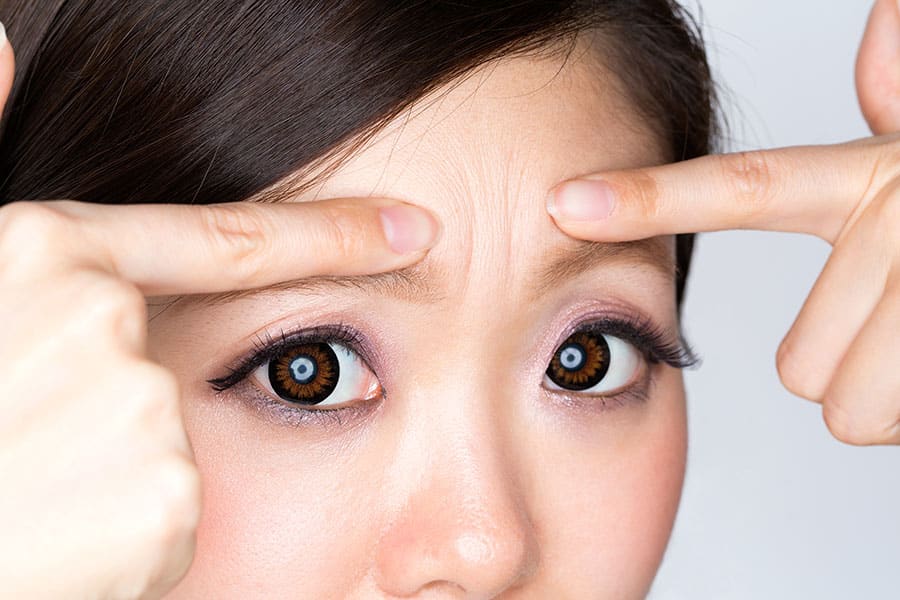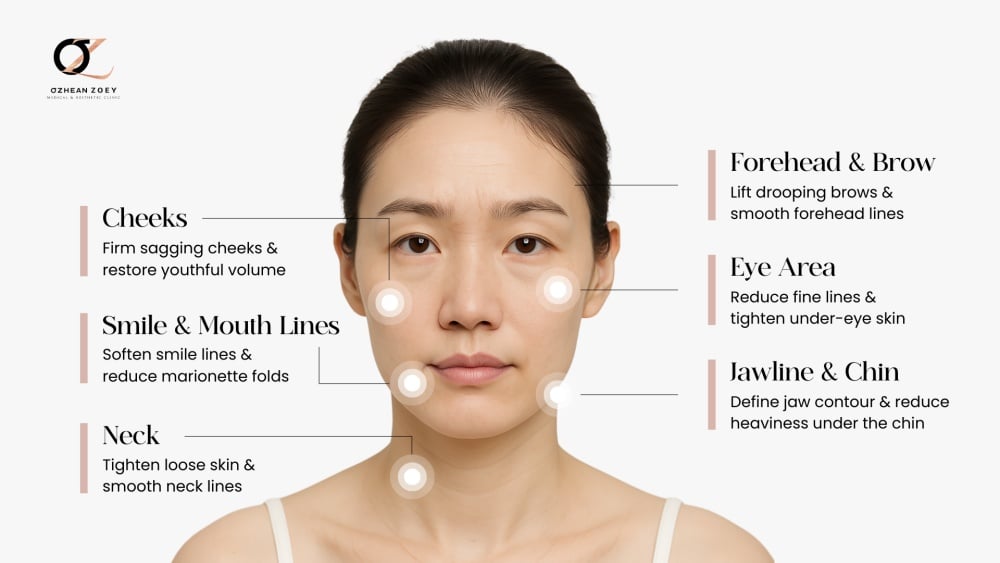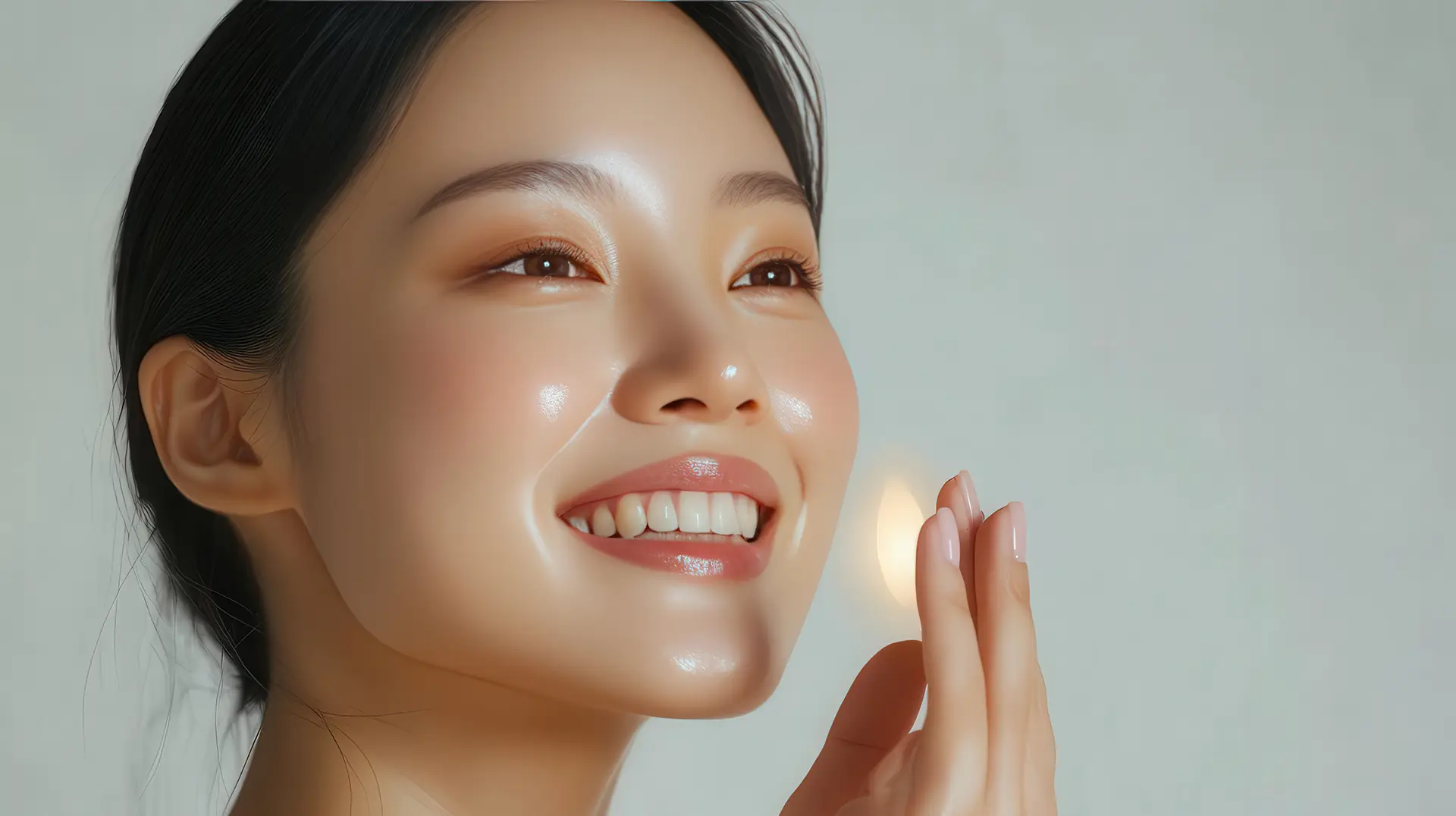Skin Booster Injection vs. Dermal Fillers: Which Is Right for You?

Injectables in the world of aesthetic skincare treatment can seem like a lot of options that can be confusing for those diving into it for the first time. While skin booster injections and dermal fillers may seem similar, the results each one delivers can significantly vary. This is why making informed choices is paramount.
Skin booster injections and injectable dermal fillers are modern skincare’s solution to more radiant and youthful skin — plus, they’re minimally invasive, making them an ideal option for beauty-conscious Singaporeans living a fast-paced lifestyle.
Although called dermal fillers, fillers are not injected into the skin itself. Instead, they are placed underneath the skin to lift, restore, and sculpt. Ironically, skin boosters are the only true ‘dermal fillers’ since they are actually injected into the dermis to improve skin health. Think of skin boosters as moisturizers and vitamins injected into the skin, while fillers are like 3D sculpting material placed beneath the skin.
If you’re currently in the middle of considering whether to get a Skin Booster or a Dermal Filler, you have come to the right page. This article will outline the mechanisms of these injectable treatments, as well as their differences and benefits. With the information you'll learn here, you can consider which approach aligns your skin goals and lifestyle based on science-backed information.
Understanding the Basics: Skin Boosters vs. Dermal Fillers
Skin Booster injections feature formulations intended to improve the skin’s ability to produce collagen and elastin. Usually, they use agents such as polynucleotides, collagen, PDLLA, or hyaluronic acid (which are typically non-crosslinked). These agents typically disperse within the upper and mid-dermis to provide support to the skin’s natural infrastructure. Their focus leans toward hydration improvement to refine skin texture rather than dramatically altering the skin’s underlying facial volume.
Meanwhile, Dermal Fillers are more about restoring volume to smooth out deeper wrinkles and enhance the contours of the face. Formulas featuring agents such as cross-linked hyaluronic acid, calcium hydroxylapatite (CaHa), PDLLA, or polycaprolactone (PCL) are more commonly present in Dermal Fillers. They are injected into the deeper layers of the skin in comparison to how Skin Boosters are delivered. As a result, they replenish significant volume to support the skin structure.
Summary of their Key Differences in Mechanism
- Skin Boosters: Act in upper layers, promoting hydration and supporting the skin’s own tissue architecture through aiding in collagen and elastin synthesis.
- Dermal Fillers: Provide structural support by physically restoring volume in deeper layers, often contouring or lifting specific areas.
What are the Different Types of Skin Booster Injection?
Skin Booster injections also come in different types and formulations to cater specifically to different skin types. These intradermal treatments are generally designed to enhance the skin’s physiological environment by improving hydration and tissue quality. While they mostly serve the same purpose of skin enhancement, they come in different types of formulas to suit the preferences of your skin.
They are usually used to target areas that tend to lack volume and structure such as the face, neck, or hands. Here are some skin boosters that have gained attention in Singapore in recent years.
OZ Baby Collagen
OZ Baby Collagen introduces non-crosslinked Type I Collagen to the skin’s dermal layer to deliver anti-aging benefits. It promotes natural collagen production which typically declines as we age. The OZ Baby Collagen treatment reinforces the skin’s structural framework by encouraging fibroblast activity and renewing collagen synthesis.
If your concern is more on prevention rather than an instant dramatic change with your face contours, OZ Baby Collagen is something to consider. It can be your regular maintenance skin booster to keep your skin’s collagen production at a healthy pace.
Hyaluronic Acid (HA) Skin Booster
HA (Hyaluronic Acid) Skin Boosters feature pure formulations of Hyaluronic Acid, a substance that’s naturally present in our body. The HA Skin Booster is specifically designed to enhance moisture retention in the dermis. As it is administered into the skin, it acts as deep hydrators that draw water into the skin to support the skin’s natural elasticity. It’s important to note that while this Skin Booster has a similar key ingredient to dermal fillers, they work differently. Fillers are meant to “fill” volume, while the HA Skin Booster bioremodels the skin tissue by promoting collagen formation.
The HA Skin Booster provides gradual enhancement, making the skin improvements look very natural. Ideally, the HA Skin Booster treatment is usually incorporated with your long-term skincare strategies as advised by the doctor, as this will give long-lasting results.
PDLLA Skin Booster
The PDLLA Skin Booster features a hybrid formulation of poly-D Lactic Acid and non-crosslinked Hyaluronic Acid that works in complete synergy to provide hydration and plumping. The PDLLA particles act as a stimulant to continuously boost collagen production over time as it‘s gradually broken down by the body to promote neocollagenesis. As a result, you get firmer, smoother skin that continues to improve even after several months post-treatment.
The mechanism of PDLLA Skin Booster makes it a suitable treatment option for individuals with concerns such as fine lines, dullness, and premature skin sagging. This Skin Booster is often recommended for individuals who wish to strengthen their dermal matrix while simultaneously addressing the lack of hydration.
Trout DNA Skin Booster
Trout DNA Booster features a science-backed formula that improves skin regeneration using Italian-engineered polynucleotides. These low molecular weight polynucleotides are derived from purified, farm-grown trout DNA and are known for their regenerative properties. Due to its smaller molecular size, the formula of PDLLA Skin Booster diffuses more easily in thinner or more delicate areas of the skin, such as the neck, décolletage, and under-eye region.
The Trout DNA Skin Booster works by restoring skin quality through bio-repair mechanisms rather than instantly delivering volume to the area. It also gives gradual skin improvement that can be seen over a series of sessions.
PN Skin Booster
PN Skin Boosters contain purified polynucleotides (PN) derived from salmon DNA. These are processed for compatibility in skin applications. When placed in the dermis, the nucleotides interact with fibroblasts and growth-factor pathways, supporting extracellular matrix repair and aiding natural tissue recovery. People often consider this when dealing with sun exposure, uneven tone, or a dull surface appearance. It does not add bulk; the intent is to work at a cellular level to support elasticity, firmness, and dermal structure.
Plans are typically scheduled across several sessions. Changes in texture and overall skin condition tend to appear gradually across repeated visits. Because it does not add volume, PN Skin Booster is commonly considered for delicate or thinner skin, where a gentle, repair-focused approach may be more appropriate.
What are the Different Types of Dermal Fillers?
Dermal fillers are injectable materials used to address volume loss, refine facial contours, and soften deeper folds that emerge with age. Instead of altering expression, they function by providing mechanical support or lift to underlying tissues in areas where natural fat and bone density have diminished.
The most widely used filler substances include cross-linked hyaluronic acid (HA), calcium hydroxylapatite (CaHA), polycaprolactone (PCL), and PDLLA microspheres. Each formulation carries unique physical characteristics — such as cohesivity, viscosity, and elasticity — that determine where in the skin it should be placed and what type of correction it can provide.
Fillers are generally introduced into the deeper layers of the skin, ranging from the mid-dermis to the subcutaneous plane. They are commonly applied for:
- Restoring midface or cheek volume
- Refining jawline or chin definition
- Softening nasolabial folds or marionette lines
- Providing subtle fullness to the lips
Some formulations, such as CaHA and PCL, are associated with collagen formation over time, gradually reinforcing tissue structure while also providing an initial contour effect.
An anatomy-based plan is important. The aim is measured correction that maintains facial balance and allows the material to integrate with the surrounding tissue.
PCL Filler
PCL Fillers is a type of dermal filler formulated with polycaprolactone (PCL) microspheres in a gel carrier. It is designed to provide both contouring and sustained support through collagen stimulation. When injected, the gel provides initial volume, while the microspheres remain in place, acting as a scaffold that activates fibroblasts and encourages collagen formation.
Over time, the gel is absorbed and replaced with collagen-rich tissue, supporting tissue structure. PCL Fillers are commonly applied in areas such as the cheeks, temples, and jawline, where support and contouring are required. The duration of effect varies by formulation, with some lasting as long as two years.
CaHA Filler
CaHa Fillers contain calcium hydroxylapatite (CaHA) microspheres suspended in a water-based gel. The injection provides support and definition, and is often used to address volume loss in the cheeks, chin, or jawline. As the gel carrier is absorbed, CaHA particles remain as a framework that supports collagen formation. This contributes to tissue support and may affect surface texture after the initial volume decreases.
CaHa Filler may also be applied to areas such as the hands or neck, where reduced fullness and skin thinning are observed. Due to its firmer composition, it is generally not recommended for soft or highly mobile areas such as the lips.
PDLLA Filler
PDLLA-based fillers are injectables that combine poly-D, L-lactic acid with a hyaluronic acid-based gel. The HA provides temporary volume and hydration, while the PDLLA microspheres support gradual collagen formation within the skin. This mechanism contributes to short-term fullness and longer-term support of dermal integrity. PDLLA fillers are typically applied in areas like the midface, jawline, or temples, where structural support and remodeling are often required.
Collagen production continues for several months as the PDLLA degrades naturally within the tissue. Unlike traditional HA fillers, the focus is not only volumization but also gradual tissue remodeling. The effects develop progressively, providing an option for individuals who prefer a slower, tissue-adaptive approach to contour correction.
Side-by-Side Comparison: Which One Fits Your Needs?
Skin Boosters = “Skin food” → directly improve skin health (hydration, glow, texture).
Dermal Fillers = “3D scaffolding” → work underneath to lift sagging skin, restore hollowness (temples, cheeks), and sculpt features (nose, chin, jawline, lips, forehead).
When considering skin boosters and fillers, a side-by-side comparison can clarify their respective features. The table below outlines these characteristics:
| Feature | Skin Boosters | Dermal Fillers |
| Primary Focus | Hydration, skin texture, and tissue support | Volume restoration, contour definition |
| Injection Depth | Superficial to mid-dermis | Deep dermis to subcutaneous or periosteal layers |
| Mechanism of Action | Biochemical stimulation of collagen, elastin, and hydration | Mechanical support with an added structural framework |
| Main Components | Non-crosslinked hyaluronic acid (HA), polynucleotides (PN), collagen, PDLLA | Cross-linked HA, calcium hydroxylapatite (CaHA), polycaprolactone (PCL), PDLLA |
| Visible Result | Gradual changes in skin quality | Sharper contours and defined shape |
| Treatment Areas | Full face, neck, chest, hands | Cheeks, lips, chin, jawline, nasolabial folds |
| Typical Longevity | About 6–12 months, depending on the product | About 9–24 months, depending on the formulation |
| Onset of Effects | Gradual and cumulative over weeks | Often seen immediately, with changes that may continue over time |
| Recommended Use | Early signs of aging, texture concerns, or maintaining skin condition | Volume loss, facial shaping, structural concerns |
Choosing Based on Your Skin Goals
Skin boosters and dermal fillers are both used in aesthetic dermatology, but the appropriate choice depends on factors such as skin condition, treatment objectives, and clinical profile.
- For hydration and skin condition. If the primary concerns are dryness, dullness, or fine surface irregularities, skin boosters may be considered. They support hydration and contribute to collagen activity, making them relevant when the focus is on texture and general skin condition.
- For facial volume and contour. When volume reduction is observed — particularly in the cheeks, chin, or lips — dermal fillers may be considered. These treatments provide structural support in areas where contours have decreased over time.
- For combined concerns. If both hydration and structural support are being considered, combination treatment plans may be appropriate. Skin boosters and dermal fillers are sometimes used together — boosters to support skin condition, and fillers to provide balance and contour
One key consideration here is that treatment suitability should be determined by a medical professional. Individual treatment objectives, medical history, and facial anatomy must all be reviewed before any injectable plan is advised. What is appropriate for one person may not apply to another.
Essential Insights
At their core, Skin Boosters and Dermal Fillers are not interchangeable. They target different facial planes and achieve very different results. One is for skin quality, the other is for structure. Their applications complement one another rather than compete:
- Skin boosters focus on hydration, skin elasticity, and surface texture, supporting natural repair and renewal processes.
- Dermal fillers are commonly applied when facial volume has reduced or contours have shifted, serving as a non-surgical way to support underlying structures.
Recognizing these differences helps individuals consider their options in consultation with a medical professional, rather than following short-term trends. Neither option applies to everyone; effects vary depending on individual anatomy, health background, and treatment planning.
By reviewing your skin condition with a licensed practitioner, treatment can be matched to appropriate objectives. This ensures the approach remains based on individual assessment and established clinical methods under professional supervision.





